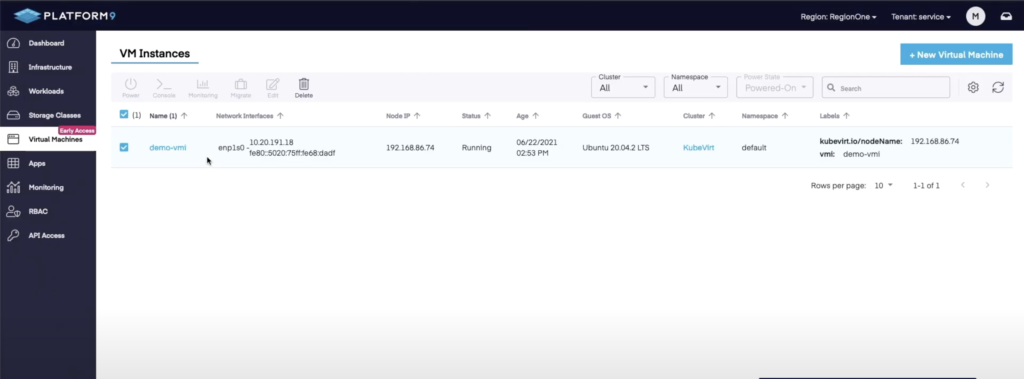Platform9 Adds KubeVirt Service to Containerize VMs
Platform9 today unveiled a managed instance of KubeVirt, open source software that enables virtual machines to be deployed within a container that runs on a Kubernetes cluster.
Chris Jones, a group product manager for Platform9, says Platform9 Managed KubeVirt is being provided as a service that complements the existing software-as-a-service (SaaS) application platform the company makes available to manage Kubernetes clusters.
Platform9 Managed KubeVirt is being made available as a separate service because not every organization wants to deploy monolithic applications running on a virtual machine on top of a Kubernetes cluster. However, there are more organizations that are looking to unify the management of disparate platforms as part of an effort to reduce the total cost of IT, adds Jones.
IT teams may not be able to migrate hundreds of monolithic application workloads running on virtual machines to Kubernetes using KubeVirt, but Jones notes there are plenty of instances where rationalizing the IT infrastructure environment makes sense as IT leaders reevaluate costs now that the COVID-19 pandemic is subsiding and the economy slowly recovers. Instances of KubeVirt are managed via the same SaaS platform that Platform9 created to eliminate the need for IT teams to set up their own control plane for Kubernetes environments.
Most instances of Kubernetes are managed in isolation from legacy IT environments. It’s not clear how long that might continue to be the case as the number of Kubernetes clusters distributed across an IT environment steadily increases. The more Kubernetes clusters there are, the more likely they are to be managed by a centralized IT organization. At the same time, Kubernetes is emerging as a primary enabler of hybrid cloud computing strategies that are normally driven by IT organizations seeking to unify the management of IT environments.
The biggest challenge is simply the lack of awareness of KubeVirt as an option for encapsulating virtual machines in containers. Platform9 is making instances of KubeVirt available within its free tier of service to give IT teams more exposure to the platform, says Jones.
In the meantime, vendors such as Red Hat and, by extension, IBM, are investing heavily in KubeVirt, which, over time, should make the platform more robust. One of the primary adopters of KubeVirt are telecommunications providers looking to migrate applications deployed on OpenStack to Kubernetes clusters as they roll out 5G-enabled services, notes Jones.
Not everyone is going to want to move a legacy monolithic application running on a virtual machine to a Kubernetes cluster. Some will conclude it’s easier to replace that application with a modern one based on microservices and constructed using containers. There may, however, be a period of overlap between when the modern application is fully formed and the legacy application can be gracefully retired. The fact is, many existing monolithic applications may still be running well into the next decade. The challenge is finding the least expensive way possible to manage legacy and modern cloud-native applications alongside each other for years to come.





